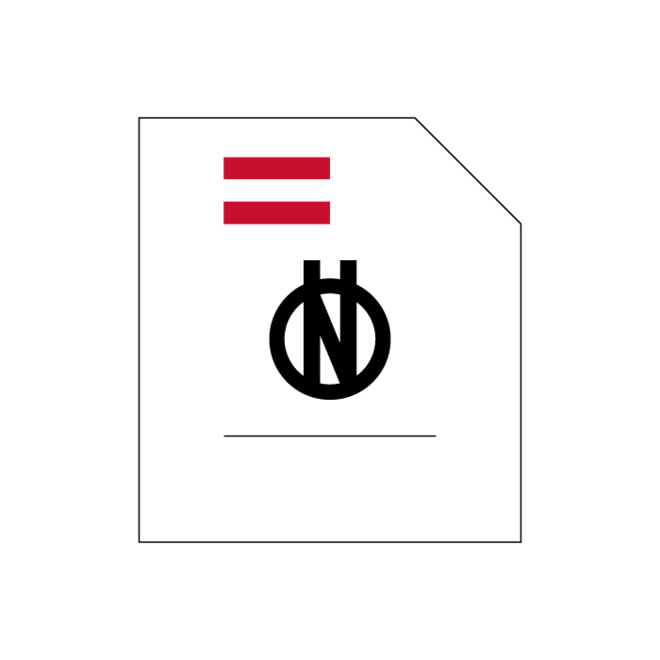Jetzt auswählen und bestellen
45,90 €
exkl. USt.
Konfigurieren


Norm
ÖNORM EN 302217-3 V 1.1.3
Ausgabedatum: 2005 05 01
Fixed Radio Systems - Characteristics and requirements for point-to-point equipment and antennas - Part 3: Harmonized EN covering essential requirements of Article 3.2 of R&TTE Directive for equipment operating in frequency bands where no frequency co-ordination is applied
The present document specifies the essential requirements for Digital Fixed Radio Systems (DFRS) operating in frequency bands, which do not require co-ordinated frequency...
Weiterlesen
ZURÜCKGEZOGEN
: 2008 04 01
Herausgeber:
Austrian Standards International
Format:
Digital | 36 Seiten
Sprache:
Englisch
Aktuell Gültig:
Standards mitgestalten:
Fachgebiete
IT, communication & electronic, Components and accessories for telecommunications equipment, Aerials
IT, communication & electronic, Radiocommunications, Radio relay and fixed satellite communications systems
Electric & lighting engineering, Radiocommunications, Radio relay and fixed satellite communications systems
The present document specifies the essential requirements for Digital Fixed Radio Systems (DFRS) operating in frequency bands, which do not require co-ordinated frequency planning. It is intended to cover the provisions of Directive 1999/5/EC [1] (R&TTE Directive) regarding article 3.2, which states that radio equipment shall be so
constructed that it effectively uses the spectrum allocated to terrestrial/space radio communications and orbital resources so as to avoid harmful interference. The present document with EN 302 217-2-2 (see bibliography) and EN 302 217-4-2 [8] will replace and supersede, after a suitable transition period, the harmonized EN 301 751 (see bibliography) for all P-P equipment and antennas.
Those parts of this multipart EN introduces, for systems (equipment and antennas) already covered by EN 301 751 (see bibliography), equal, technically equivalent or less stringent requirements. Therefore, from a strictly technical point of view, it is expected that equipment already conforming to the previous EN 301 751 (see bibliography), would not need a new test report for re-assessment of essential requirements according this new multipart EN; however, legal implications with respect to the declaration of conformity and equipment labelling are not in the scope of the present document.
In addition to the present document, other ENs that specify technical requirements in respect of essential requirements under other parts of article 3 of the R&TTE Directive [1] will apply to equipment within the scope of the present document.
NOTE: A list of such ENs is included on the web site http://www.newapproach.org. In order to technically cover different market and network requirements, with an appropriate balance of performance to cost and effective and appropriate use of the radio spectrum, the present document, together with EN 302 217-4-2 [8],
offers system types and antennas alternatives, (...abbreviated)
ÖVE/ÖNORM EN 302217-2 V3.3.1
2022 01 01
Fixed Radio Systems; Characteristics and requirements for point-to-point equipment and antennas; --...
Norm
ÖVE/ÖNORM EN 302217-2 V3.2.2
2020 06 01
Fixed Radio Systems; Characteristics and requirements for point-to-point equipment and antennas; -- ...
Norm
ÖVE/ÖNORM EN 302217-2 V3.1.1
2017 08 01
Fixed Radio Systems; Characteristics and requirements for point-to-point equipment and antennas; -- ...
Norm
ÖVE/ÖNORM EN 302217-3 V2.2.1
2014 07 01
Fixed Radio Systems - Characteristics and requirements for point-to-point equipment and antennas - P...
Norm
ÖVE/ÖNORM EN 302217-3 V2.1.1
2013 09 01
Fixed Radio Systems - Characteristics and requirements for point-to-point equipment and antennas - P...
Norm
ÖVE/ÖNORM EN 302217-3 V1.3.1
2009 10 01
Fixed Radio Systems - Characteristics and requirements for point-to-point equipment and antennas - P...
Norm
ÖVE/ÖNORM EN 302217-3 V1.2.1
2008 04 01
Fixed Radio Systems - Characteristics and requirements for point-to-point equipment and antennas - P...
Norm
ÖNORM EN 302217-3 V 1.1.3
2005 05 01
Fixed Radio Systems - Characteristics and requirements for point-to-point equipment and antennas - P...
Norm
↖
Norm
ÖVE/ÖNORM EN 302217-3 V1.2.1
Ausgabedatum :
2008 04 01
Fixed Radio Systems - Characteristics and requirements for point-to-point equipment and antennas - Part 3: Harmonized EN covering essential requirements of article 3.2 of R&TTE Directive for equipment operating in frequency bands where simplified or no frequency co-ordination procedures are applied (ETSI EN 302217-3 V1.2.1 (2008-02))
